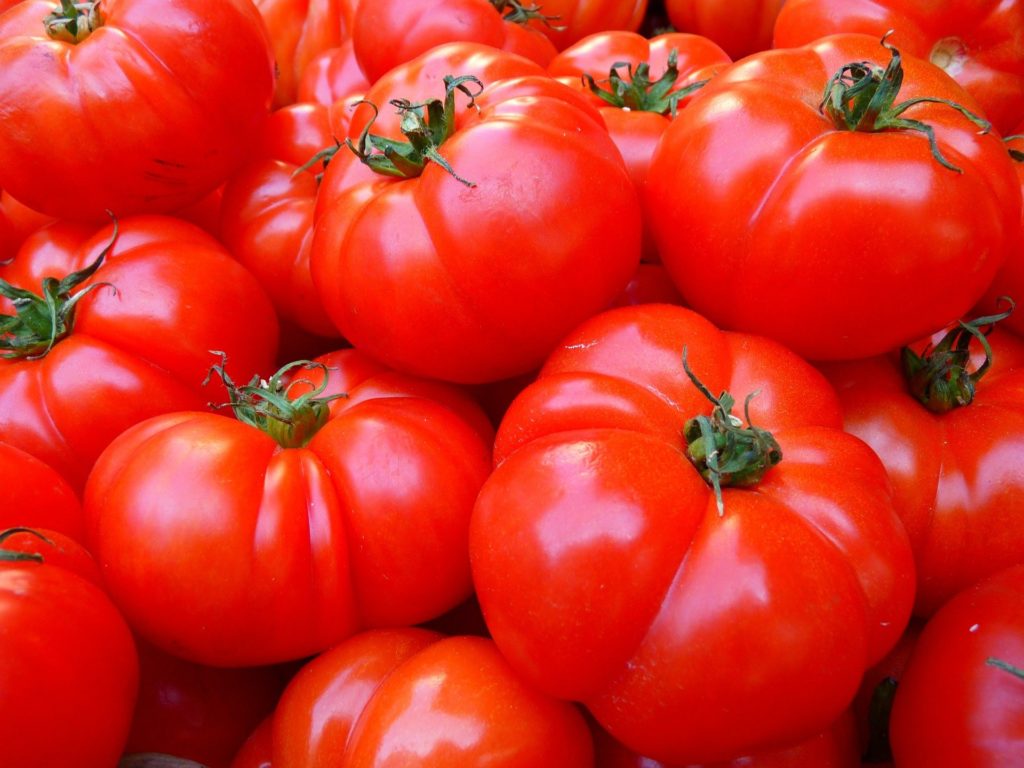
Did you know tomatoes may not be considered to be highly acidic? New tomato varieties, over-mature fruits, and tomatoes from dead or frost-killed vines may have a pH greater than 4.6. To ensure a safe acid level for boiling water canning of whole, crushed, or juiced tomatoes, it is recommended to add bottled lemon juice or citric acid directly to jars before filling the jars with the product.
Tomatoes can be preserved by drying, freezing, or pickling, as well. They can even be used in making fruit spreads like jams, jellies, and marmalades depending on their acid level. Tomatoes are a great item to dry. They do not need to be blanched and are dried to a crisp.
Freezing tomatoes will likely result in a soft texture and is more appropriate for cooking, such as in soups, stews, and spaghetti sauces. Tomato products, such as chili sauce and catsup, can be frozen.
If you decide to pickle your tomatoes, commercially prepared vinegar is typically needed to achieve the required acidity. Do not change vinegar, food, or water measurements in a recipe or use vinegar with unknown acidity. Use only recipes with tested quantities of ingredients. There must be a minimum, uniform level of acid throughout the mixed product to prevent the growth of botulism.
Canning Recipes:
- Do not can tomatoes from dead or frost-killed vines.
Tomatoes
- Whole or Halved Tomatoes Packed in Water
- Whole or Halved Tomatoes Packed in Tomato Juice
- Whole or Halved Tomatoes with No Added Liquid
- Crushed Tomatoes
- Stewed Tomatoes
- Tomatoes with Okra or Zucchini
- Tomato Vegetable Mixtures (Pressure Canned)
Tomato Sauces/Paste
- Tomato Paste
- Standard Tomato Sauce
- Tomato Ketchup
- Country Western Ketchup
- Blender Ketchup
- Easy Hot Sauce
- Cayenne Pepper Sauce
- Barbecue Sauce
- Spaghetti Sauce without Meat
- Spaghetti Sauce with Meat (Pressure Canned)
Tomato Juices
Tomato/Tomatillo Salsas
- Choice Salsa
- Chile Salsa (Hot Tomato-Pepper Sauce)
- Chile Salsa II
- Mexican Tomato Sauce
- Tomatillo Green Salsa
- Tomato/Tomato Paste Salsa
- Tomato and Green Chile Salsa
- Tomato Salsa with Paste Tomatoes
- Tomato Taco Sauce
Jellied Products
Pickled Products
- Kosher Style Dill Green Tomato Pickles
- Pickled Sweet Green Tomatoes
- Spiced Green Tomatoes
- Pickled Green Tomato Relish
- Tangy Tomatillo Relish
- Fall Garden Relish
- Oscar Relish
- Picalilli
- Rummage Relish
Pie Filling
Freezing Recipes:
Videos:
- Extension Explores: Preserving Tomatoes Zoom Session from July 2021
- Canning Tomatoes (Tennessee Extension)
- Using a Waterbath Canner Slide Presentation (Tennessee Extension)
- Using a Waterbath Canner (Georgia Extension)
- Salsa Time 1 – Preparing Ingredients (Kansas Extension)
- Salsa Time 2 – Cooking the Salsa (Kansas Extension)
- Salsa Time 3 – Preparing and Filling Jars (Kansas Extension)
- Salsa Time 4 – Processing (Kansas Extension)
- Salsa Time 5 – Removing Jars (Kansas Extension)
- Salsa Time 6 – Storing and Using Salsa (Kansas Extension)
Other Preservation Recipes:
Resources:
- Extension Explores: Preserving Tomatoes Digital Newsletter 2022
- Canning Tomatoes Introduction
- Acidifying Tomatoes When Canning
- Sorting Out Tomato Canning Directions
- Preserving Tomatoes and Tomato Products (Georgia Extension)
- Preserving Tomatoes (Kansas Extension)
- Let’s Preserve Tomatoes (PennState Extension)
- Preserving Green Tomatoes (Maine Extension)
- Sensational Salsa (Georgia Extension)
- Sassy Safe Salsa at Home (Kansas Extension)
- Canning Your Own Salsa Recipe
- How to Use a Waterbath Canner
Frequently Asked Questions:
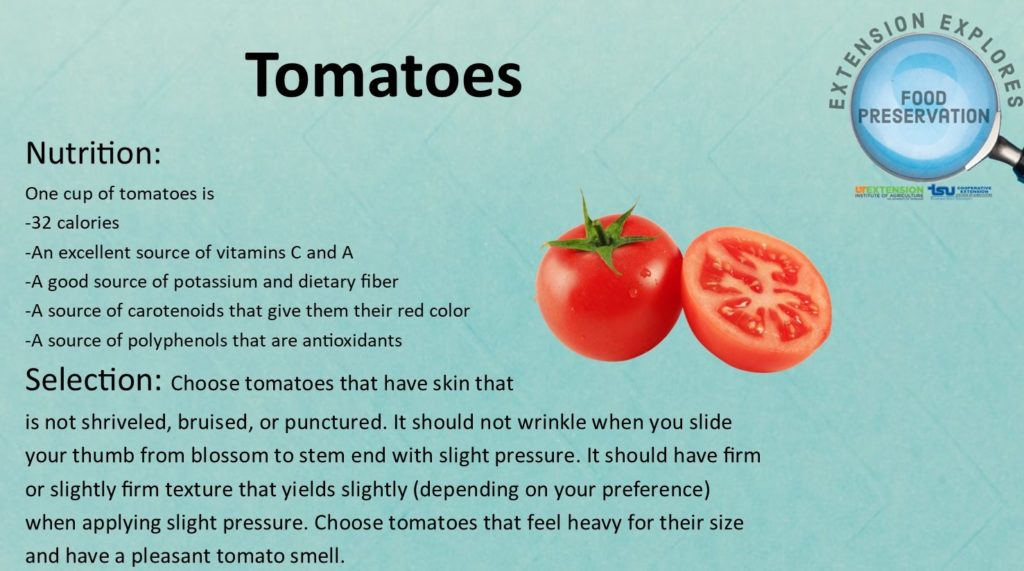
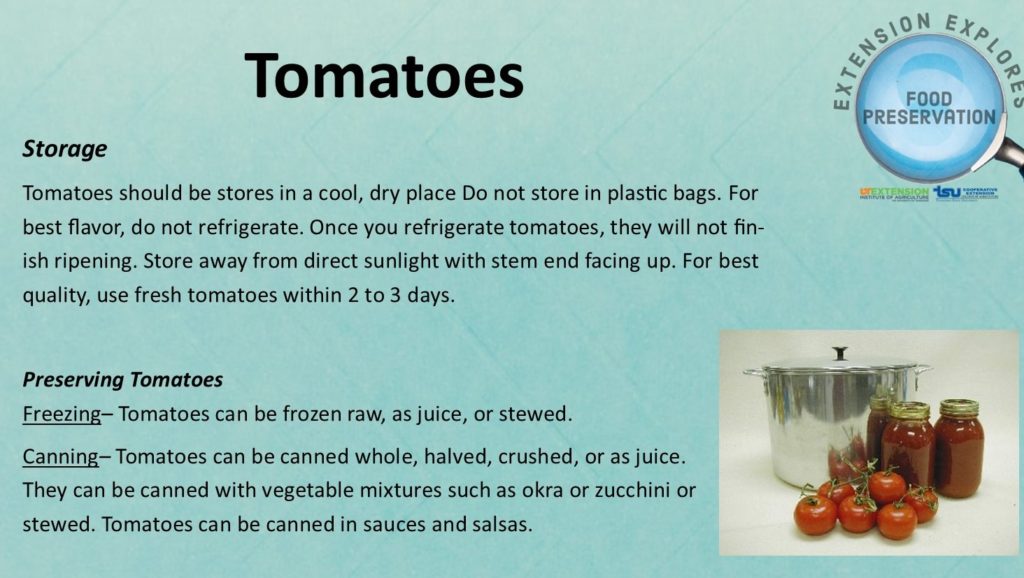
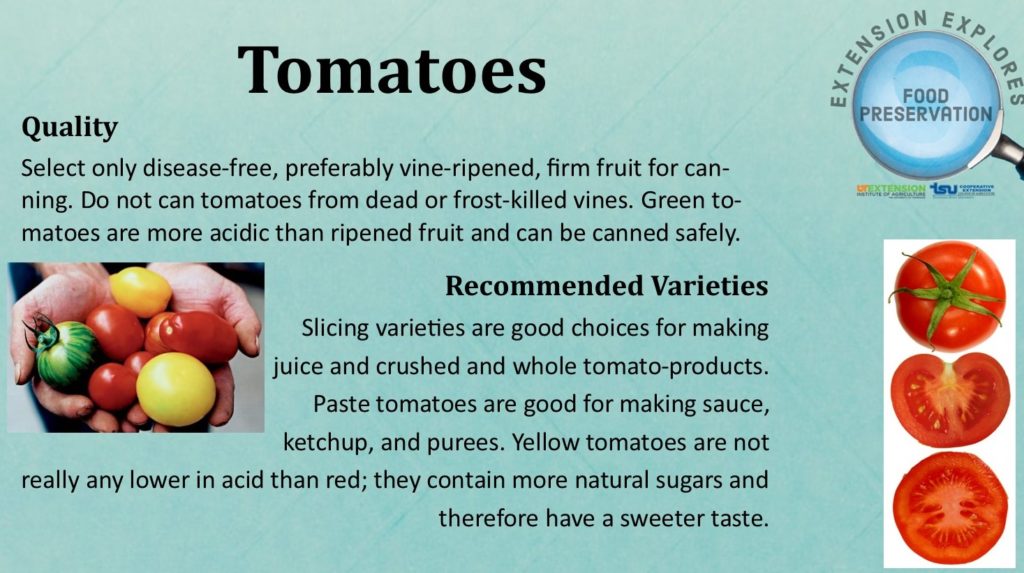
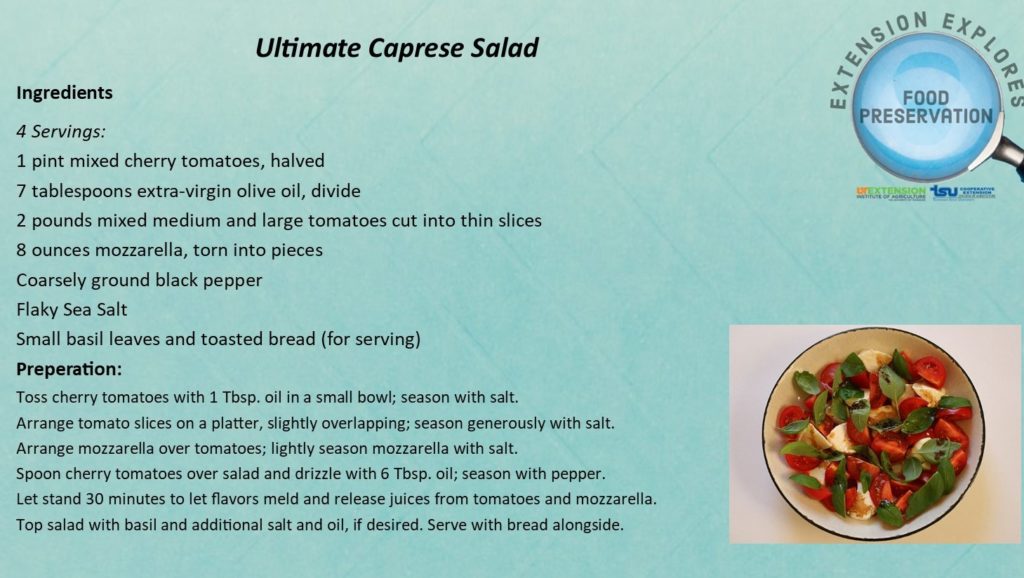
For more information or questions about food preservation, please contact the Family and Consumer Sciences Agent at your local county Extension office. Click here for a list of the Tennessee Extension Offices.
Trade and brand names are used only for information. The University of Tennessee Extension and Tennessee State University Extension do not guarantee nor warrant published standards on any product mentioned; neither does the use of a trade or brand name imply approval of any product to the exclusion of others which may also be suitable.